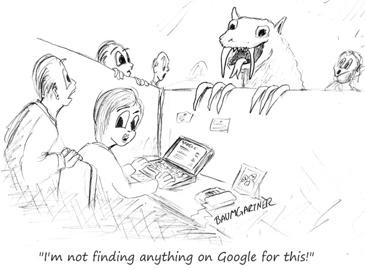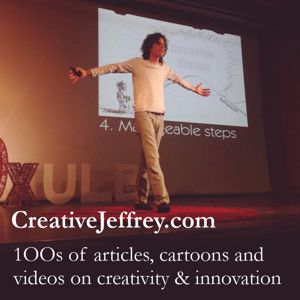A Dozen Ways to Solve Problems
Have you got a vexing problem to solve? I may not have a solution, but I can offer you a dozen different ways you can solve the problem together with the pros and cons of each way, which is surely the next best thing to a solution!
Here they are:
1. Do Nothing
Doing nothing is not really a solution, but it is usually the easiest response to a given problem. However, it is not always the best way. If your house is burning down, doing nothing may be easy, but the consequences would be disastrous.
Variations of the do nothing solution are:
- Deny the problem exists. An example of this is politicians denying climate change.
- Pass the problem on to someone else to solve.
- Call a meeting to discuss the problem to death without actually doing anything about it. This is a particularly commonplace business approach to not solving problems.
Pros
- Easy.
- If things go wrong, it is easy to deflect the blame by pretending ignorance or suggesting someone else was responsible for taking action.
Cons
- Problems are rarely solved by doing nothing.
- Doing nothing does not impress customers, bosses or the opposite sex.
2. Do the First Thing that Comes to Mind
I know a woman who, when she runs into a problem, responds with the very first idea that comes to mind. She does not bother to think the solution through or consider other options. If her solution does not work, or makes things worse -- something that often happens when a person does not think a solution through -- she uses the same approach to solve the worsened problem. Not surprisingly, she is occasionally overwhelmed by small problems that have become worse and worse owing to ill-thought solutions.
Pros
- Quick
- You feel you've done something about the problem.
Cons
- Very often, the chosen solution is not the best solution. Sometimes the solution makes things worse.
- By failing to understand the problem before trying to solve it, you are not prepared for similar problems in the future.
3. The Conventional Solution
If you know the conventional solution to a given problem, that solution is usually a low risk one to take. It is tried and tested. But it is usually rather boring and it is never creative.
Pros
- Low risk - usually.
- Relatively easy to implement.
- Unlikely to be criticised for your choice of solutions.
Cons
- Boring.
- Great innovations never result from conventional solutions
- By using the conventional solution, you may miss exciting opportunities.
4. Research and Make an Informed Decision
If you do not fully understand the problem and its implications, or if you have no idea how to respond to a problem, researching the problem and making an informed decision on what action to take is an intelligent solution. In the days of old, this probably would have involved a trip to the library and contacting experts. Today it is more likely to start at Google.
Asking questions of experts is a great way to understand a problem and determine the best solution. Experts can also often advise against courses of action that have not worked in the past.
Pros
- You gain a good understanding of the problem.
- You can defend your choice of solution to others.
- Less likely to suffer unexpected consequences.
Cons
- Time consuming; not suitable if you are in a hurry.
- Probably not a creative solution, unless you are purposefully looking for a creative solution (see 10. Anticonventional Thinking below)
5. Google the Problem
If you do not have time to properly research a problem, the speedy alternative is to enter the problem (or key words relating to the problem) into a search engine such as Google, select the top results and follow the example given in the results.
If you prefer demonstration, you can search your problem on YouTube and very likely find a video tutorial on dealing with your problem.
Pros
- Reassuring. If a solution is listed in several of the top results in a Google search, it is probably a tried and tested solution.
- You can show your Google results to others to defend your solution.
- Particularly suitable for technical problems which require specific solutions.
Cons
- Almost certainly not a creative solution.
- Excessive use of Google to solve problems reduces your inclination and ability to use your brain to solve problems.
6. The Instinctive Solution
If you know what you are doing, you may instinctively know how to solve a problem, even if the problem is new to you and the solution is not enshrined in convention. Great leaders often do this successfully. The uninformed often do this miserably. It really only works if you are knowledgeable about the area of the problem. For example, if a doctor comes across someone with a mysterious illness, she can instinctively take action to alleviate the symptoms and try to work out what is wrong with the patient. A non-doctor, on the other hand, might have ideas about how to help the ill person, but his ideas could very well make the ill person worse.
Note that the instincitve solution is not the same as doing the first thing that comes to mind (no 2 above). When you choose to implement the instinctive solution, it usually comes from investing thought in the problem and visualising how an instinctive solution would likely pan out.
Pros
- It is a relatively quick way to identify a solution and take action.
- It may be creative.
- If you know what you are doing, there is knowledge and experience in your solution.
Cons
- If you do not know what you are doing, things could go wrong; sometimes very wrong!
- It can be hard to convince others that an instinctive solution is a right solution if you lack evidence or documentation to demonstrate the validity of your solution.
- If things do go wrong, you are likely to bear the full brunt of the blame.
7. Brute Strength
Sometimes, applying as much force as possible to a problem solves it. In days of old, when a television or radio was not working, a whack on the side of the device solved the problem surprisingly often. A square peg might not fit into a round hole if you push gently, but if you hit it really hard, it will probably fit. If the lock to your door is broken or the key is lost, smashing the door with sufficient strength will eventually open the door. Children often find that if their quiet requests do not get results, screaming and shouting often does.
Pros
- Works surprisingly often.
- Is not intellectually demanding.
- Can be satisfying, especially if you are frustrated at not being able to solve a problem.
Cons
- Absolutely not suitable if the brute strength will physically hurt a person or animal.
- May cause damage.
- Is seldom an elegant solution.
8. Pass the Problem to Someone Else
A great way of solving problems is to pass them on to someone else. If you are a leader, this is known as delegation and is considered a good thing. If you are not a leader or do not have the authority to assign a problem to someone else, you will need to use charm or subterfuge. A great way to get someone else to take on a problem is to compliment them by saying how good they are at solving such problems, particularly in comparison to you. "This customer is upset about a product flaw. You are much better with people than I am. Could you speak to her please?"
Pros
- Easy to do.
- Often alleviates your responsibility with respect to the problem.
Cons
- You give up control over the solution.
- The person who solves the problem gets the credit.
- Doing this regularly will have a negative impact on your popularity.
9. Prayer and Other Supernatural Solutions
When facing a difficult problem, many people seek advice from their preferred god. Others may look to a fortune teller or other form of clarvoyant. Others might look for auspicious signs, perhaps from a god, telling them what to do.
Pros
- Believers feel a confirmation of their faith when seeking supernatural support in problem solving.
- Percieved absolution of responsibility for the consequences if things go wrong.
Cons
- Not a viable solution for non-believers.
- Dumping your responsibility on your god (or other supernatural force) is effectively evading taking personal responsibility for your problem. Your god may well feel that you should solve your problem yourself.
Note: I am being very general about religion here. I know that Report 103 is read by Christians, Jews, Muslims, Hindus, Buddhists and atheists.
10. Creative Problem Solving
Creative problem solving (CPS) is an expansion of traditional brainstorming in which you identify and clarify a problem by asking analytical questions; generate as many solutions as you possibly can by focusing on quantity of ideas over quality of ideas; combine ideas; and decide on the best idea. The first part of CPS, idenitifying and clarifying a problem, is very powerful because it requires that you focus on understanding the true nature of your problem.
However, in my experience, the second and third step of CPS (generate ideas and then combine ideas) encourage mediocrity and the fourth step is poorly defined and often results in CPS sessions that generate over 100 ideas but no decision on which ideas to implement. That said, a good facilitator can overcome the inherent weaknesses of CPS and help you come up with ceative solutions.
There are a number of variants of creative problem solving, all of which include the method's diverge (generating a lot of ideas in an uncritical environment) - converge (find the best idea) approach.
Pros
- Easy to follow structure.
- Identifying and clarifying a problem brings understanding that facilitates good ideas.
- It is usually fun.
- Lots of positive reinforcement during idea generation.
Cons
- Ideation focus on quantity rather than quality tends to result in lots of mediocre ideas and few, if any, truly creative ones.
- Time consuming and inefficient; after listing lots of ideas, you typically only select one.
- Lack of a structure for selecting creative ideas often results in no selection of ideas.
11. TRIZ
TRIZ (The Russian acronym for "Theory of Inventive Problem Solving") is a structured problem solving method that uses facts and data rather than intuition to solve problems. It is essentially an algorythm based on the assumption that technical problems tend to happen again and again. By using a set of structured problem solving principles, you can identify problems that are similar to yours and the find ways to apply previously successful solutions to your problem.
Pros
- Very structured; anyone with appropriate training can follow the structure.
- Particularly suited to engineering and technical problems.
- Solution oriented.
Cons
- May not work so well with non-technical problems.
- Focus on facts and data rather than feeling and intuition does not work for some.
- Lack of case studies demonstrating successful use of TRIZ
Disclaimer: I am not experienced in the use of TRIZ. My information here is based on reading about the method.
12. Anticonventional Thinking (ACT)
Anticonventional thinking (ACT) is a creative thinking method that focuses on purposefully rejecting conventional thinking in favour of unconventional thinking. It is a four step process that starts with digging deep into a problem in order to understand it from various perspectives and to associate the problem with varied, seemingly unrelated information. This is followed by a process of building a creative vision and an implementation plan based on the vision.
Pros
- Particularly suited to problems that require truly creative solutions.
- Works towards a creative vision and action plan -- so it is focused on a solution rather than ideas.
- Enables you to dig very deep into a problem and, as a result, gives unexpected insights.
Cons
- Focus on rejecting conventional thinking makes it unsuitable for problems in which you do not want or need to find a creative solution.
- New and not tried and tested to the extent that CPS and TRIZ have been.
- Requires that you reject certain thinking behaviours, such as conventional thinking and generating lots of ideas to solve problems. Some people do not find this easy.
Disclaimer: As you probably know, ACT is my invention. Although I have tried to be objective here, I am inevitably prejudiced when analysing ACT!
What Do You Think?
What do you think? Have I missed a problem solving method? If so, please share it with me!
R103/05112014
Recent Articles
Leading Diverse Teams
Filed under: Business Innovation
Diverse teams are more innovative and smarter than homogeneous ones. But, they are also harder to manager. Here are some tips. By Jeffrey Baumgartner -- Read the article...
Questions you should ask when an innovative project fails
Filed under: Business Innovation
You can learn a lot from the failure of an innovative project, but you need to ask the right questions. Here are those questions. By Jeffrey Baumgartner -- Read the article...
Unmarketing the Competition
Filed under: Business Innovation
A look at creative, but unethical dirty trick marketing campaigns designed to damage the competition By Jeffrey Baumgartner -- Read the article...
Imaginativefulness and the Fisherman
Filed under: Creativity
What does a fisherman wearing a cycling helmet have to do with imaginativefulness? Quite a lot, it seems. By Jeffrey Baumgartner -- Read the article...
Actually, Criticising Ideas Is Good for Creativity
Filed under: Creativity
People have long assumed criticising ideas in a brainstorm inhibits creativity. Research and experience shows that is wrong By Jeffrey Baumgartner -- Read the article...
Imaginativefulness
Filed under: Creativity
Imaginativefulness is a state of heightened imagination in which your mind allows thoughts, memories and ideas to play with each other freely. By Jeffrey Baumgartner -- Read the article...
Why and How to Exploit Alternative Uses for Your Products
Filed under: Business Innovation
Discovering new ways customers use, misuse and could use your products can inspire innovation. Jeffrey Baumgartner explains. By Jeffrey Baumgartner -- Read the article...
The Cost of Not Innovating
Filed under: Business Innovation
If your company fails to innovate, you pay a steep price in terms of loss of leadershop, tight margins, missed opportunities and more. By Jeffrey Baumgartner -- Read the article...
Don't Trust the Status Quo
Filed under: Creativity
Jeffrey Baumgartner has never trusted the status quo. He explains why this is so and why you should also not trust the status quo By Jeffrey Baumgartner -- Read the article...
Index of all creative articles...





